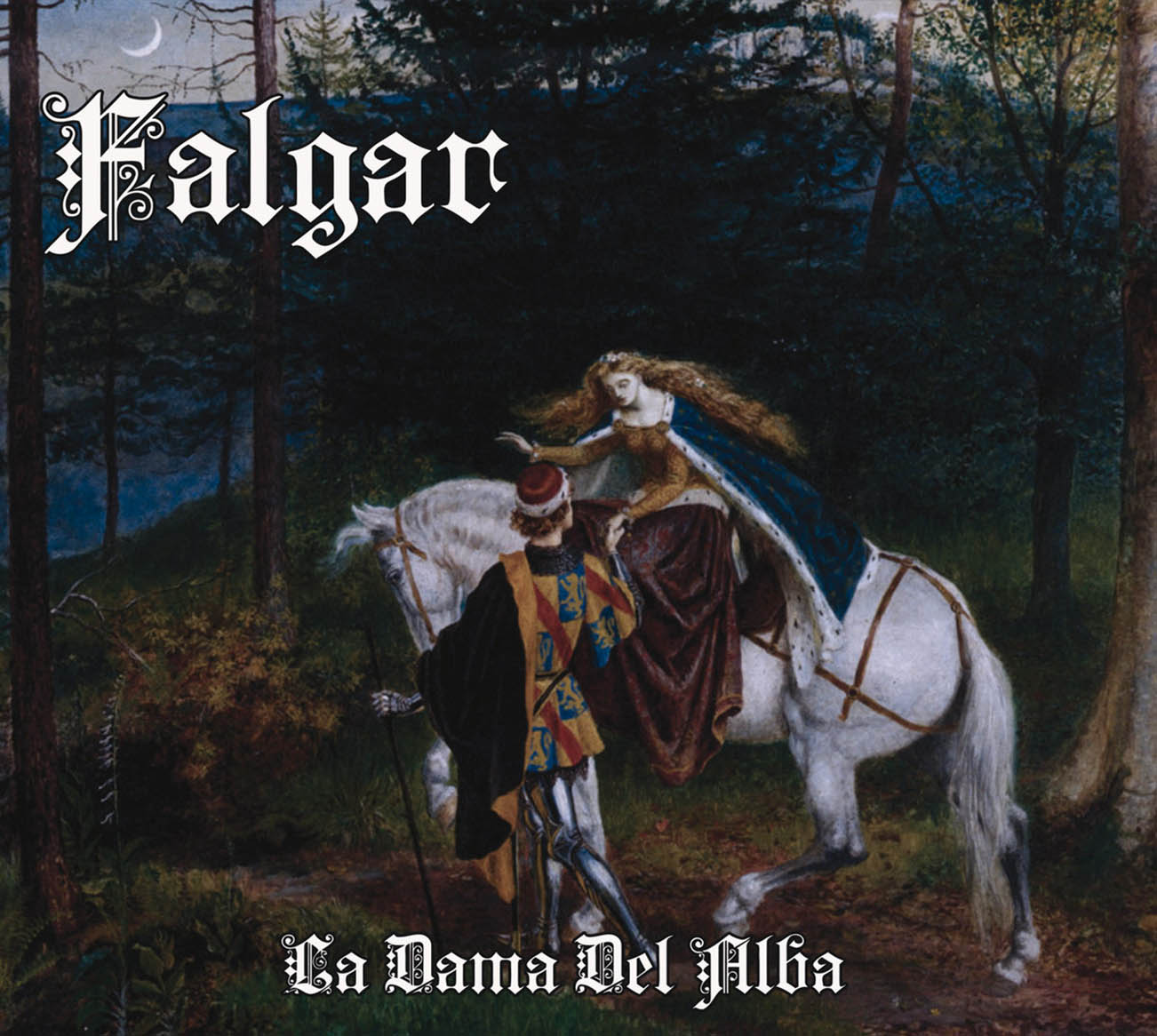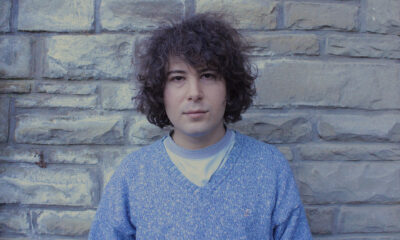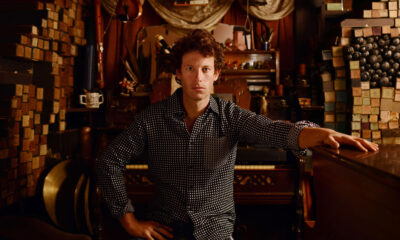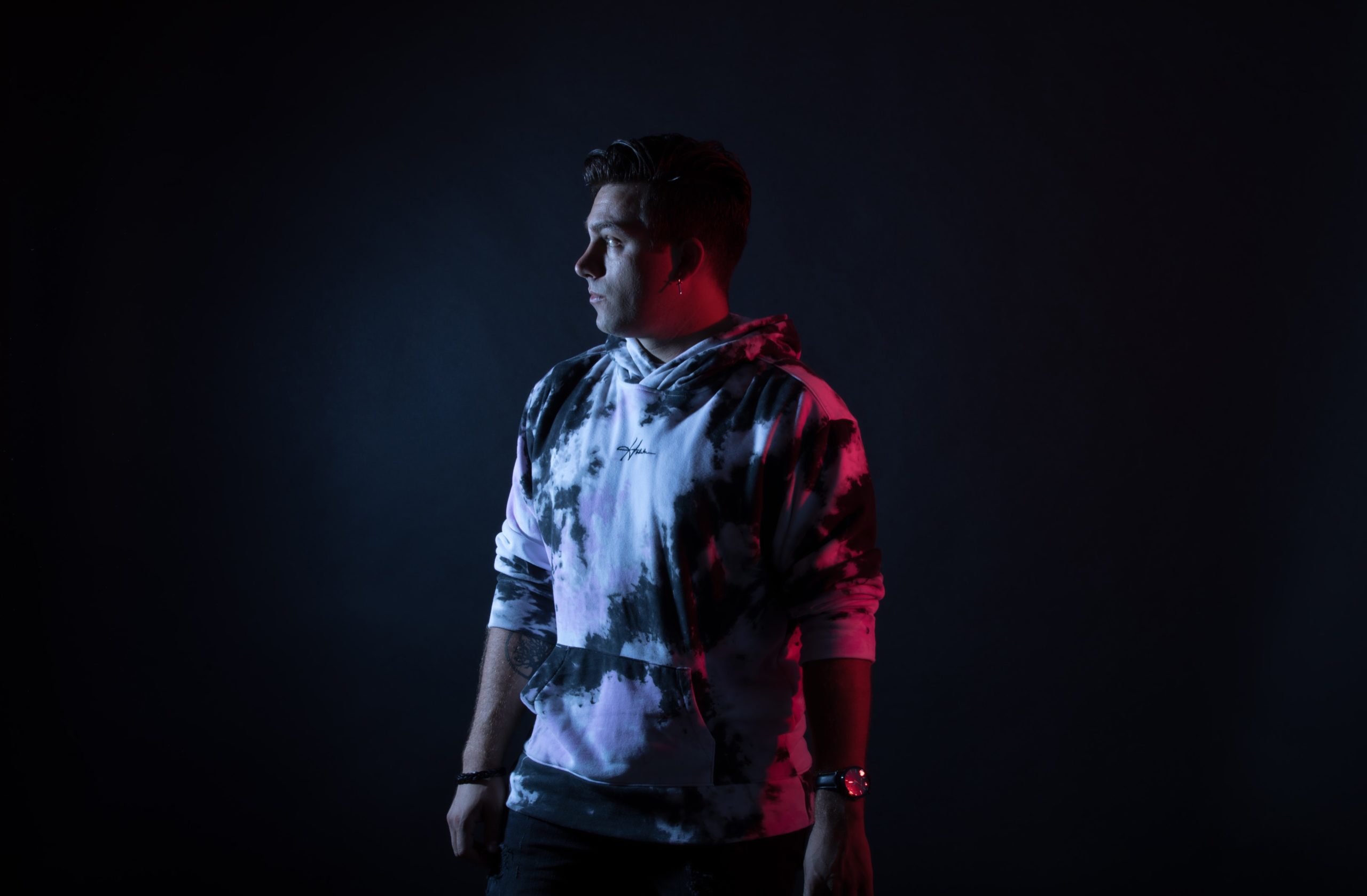Interviews
An Interview with FALGAR: “Looking Back at the History You Created Yourself”
Etienne Goldberg, also known by his musical stage name Falgar, speaks to us about the reissue of his third record La dama del alba, and touches on some new music coming very, very soon.

At the risk of being called out on ridiculously trumped up charges of racism by politically correct alarmists who see shadows around every corner, Etienne Goldberg is one of the last names you’d expect to see in a Puerto Rican phone book. Well, these days you won’t find Goldberg’s name in San Juan’s White Pages, but there was a time you would and at that time our young friend was bucking the odds and trends by churning out his eerie and desolate brand of one-man bedroom black metal in the inhospitable surroundings of the capital of America’s 51st state. Goldberg’s prolific spell and work ethic didn’t abate when he made the quizzical decision to uproot himself and his Falgar project to Vermont in the early ‘10s having issued seven albums in total (with at least two official EPs in his discography) with more on the way.
The focus of this present promotional thrust, however, is actually an older recording entitled La dama del alba. Originally released in 2013, Goldberg’s then-third album skirted with the sort of black metal that touched both astringently bleakness and ethereal minimalism in the same way Varg Vikernes did with Det som engang var and Hvis lyset tar oss, before he went completely off his rocker. La dama del alba was also arguably the final dalliance Falgar had with metal as the project was drastically turned towards neo-folk with follow-up Lejanía and the three albums that have followed since.
Cult black metal label, Italy’s Aeternitas Tenebrarum Musicae Fundamentum, or ATMF if you failed Latin and/or value your sanity, is reissuing the album, giving it the digipack treatment in the process, something that Goldberg probably never imagined considering the circumstances under which it was recorded and that its initial release was limited to 100 cassettes. The introduction of ATMF into the world of Falgar has given Goldberg reason to pause and ruminate over his harder more abrasive days. We cornered him via email for a look back and to get the lowdown on how romance, creative isolation, and life in the Green Mountain State all influenced black metal.
First, here’s a sample of what La dama del alba sounds like with the title track.
There have been two significant changes that have backdropped the story of Falgar: 01. you starting in San Juan, PR and ending up in Vermont, and 02. your musical move from black metal to neofolk. What can you tell us about each of these? How and why they happened and the impact they’ve had on you personally and artistically?
Falgar: It began in San Juan, Puerto Rico in 2007 when I was sixteen years old. Having come from Puerto Rico, I could say I was limited right from the start. I did not have many resources and so from the very start, I went at it alone. I made the move to Vermont because a good friend of mine made the move first. I simply wanted to start fresh and leave home once and for all. The nature here, the changing seasons, the arctic winters were something that influenced the neofolk later on. The change to a neofolk sound after La dama del alba was something that came about spontaneously when I was experimenting in my room for an album in the summer of 2013. I did not want to make another metal album at that point. I was sick and tired of listening to the same thing over and over again.
So, I decided to take the “dive,” so to speak, and make something new, fragile and romantic as well. My previous metal albums already had some of these elements, but I wanted to go further; to almost go back in time to a place before I even knew metal. It was a calling to an older time, to the first images that once claimed my heart when I was very young. Vermont and the change to a neofolk sound have impacted me greatly because I feel that this is my own world. I lost followers on the way. Many who liked the “metal” Falgar lost interest after the change, but what do I care? It was the best change I ever did.
How long did it take to write La dama del alba and what would you say were the major motivations that spurred you towards writing it?
Falgar: La dama del alba was written and recorded in about a week, in a room all by myself in Winooski, Vermont with a cheap 100 dollars interface, my SM57 microphone and a tiny Marshall amp that I bought at a store for 70 dollars or 80 dollars. It was all done at the moment, mostly improvised, as I wrote most of the songs as I recorded them, adding an interesting and spontaneous dynamic. I wanted to make an intentionally lo-fi, down-tempo and emotional sounding album. I was into Greek Mythology at the time (still am) and so most of the songs are about a journey in finding the goddess Artemis, which is simply a representation of the untainted feminine archetype. It was a search for a woman at the time, a romantic attempt. I made myself vulnerable in that album, and I’m very glad I did.
Mark that calendar because De sangre y sol will be with us on January 4th, 2019!

Was there anything that was done differently in terms of the way the album was written or recorded that what you had done in the past?
Falgar: As I said in the previous question, most of the tracks on the album were improvised on the spot. I was writing them and crafting them as I recorded them. The previous two metal albums of 2009 and 2010 were all written before recording them. So, in this sense, La dama del alba was a new experience in recording for me as I had a full room to experiment as I wanted in isolation with no one bothering me like in a studio. I wanted a very raw and crude, yet emotionally charged album. There was not anything that I intended beforehand. It all came gracefully as I was making it. I would sit down in the morning and say, “okay, let’s record a full song today” without having any idea of what the song was going to sound like. This is a rather strange way to make an album, but it opened many doors for me later on.
What is the significance or story behind the album’s title? And how does the cover art apply?
Falgar: The album title is related to Artemis, although Artemis does not really have much to do with the dawn or with light. To me, Artemis is the prime feminine archetype, the purest representation of the female spirit so by using this title, I was almost dedicating the album to some sort of feminine figure. I will not say who, but the album is romantic in nature. The cover, a painting by Walter Crane, is an encounter between a couple in the forest at dusk (or dawn), and to me there was something sacred in this work. I had to use it. The young woman in the painting can be seen as Artemis, La dama del alba, the lady of dawn, at least to me. The title and cover carry with it a very romantic essence and I carry this in my heart always, even if I may not show it in daily life.
This is what Falgar sounded like as a black metal outfit with “Laberintos” from La dama del alba.
How would you characterise La dama del alba against your previous works?
Falgar: La dama del alba against the two previous black metal albums is definitely extremely different. I would say it carries more sentiment, fragility and a more contemplative approach. The two previous albums, I would say, were just run-of-the-mill black metal albums, generic, nothing too interesting, but with La dama del alba I believe I brought something slightly fresh to the table. It’s raw and as personal and intimate as it gets in metal.
I understand the album was actually previously released on cassette by a different label. What made you decide to extend the life of the record with ATMF?
Falgar: Yes, it was released back in April of 2013 by Nebular Winter Productions on cassette, but I chose several times to “extend its life.” It has been re-released several times by other labels (Kunsthauch and Myrkr). I had known about ATMF already from the album Race of Cain by Forgotten Woods, a fantastic, underrated album with misunderstood fury. (It’s) a personal favorite of mine in the metal world. So, when ATMF contacted me I agreed. I didn’t see why not. An opportunity is an opportunity and I chose to take it.
I’m sure you get asked this all the time, but at any point have you thought about making Falgar into a full band?
Falgar: I have been asked this question many times and my answer is and will always be NO. I could never tolerate being on a stage when it comes to Falgar. It belongs away from the crowds, from the multitudes, away from “party culture” and the social element. It began with myself in my room, alone, and it will continue this way. If someone wishes to listen to Falgar, then play the album. Put your headphones on and walk outside at the hour of dusk. This is much better than what any show can ever offer.
Have a listen to another track from La dama del alba with “Seguiré.”
What are the particular reasons you maintain it as a solo project? As the sole creative force for Falgar, what are the pros and cons of doing it by yourself?
Falgar: I have maintained Falgar as a solo project simply because I love it this way. I have full control, and my vision remains personal, selfish and uncompromising. I could never bring another person into it. I could not stand it. Obviously, the pros are numerous, as I have total control and I can write and express myself as I wish. But like anything else within nature, there are cons. The cons would perhaps be that since it is just me, it is harder to disperse my music and manage it efficiently. Sometimes the musician himself isn’t always the best person to promote his work. But I have taken this risk and for now, this is the way it is. I have no regrets. Falgar will always remain a solo project.
What are your plans and hopes for La dama del alba? Are you planning for things to be different now that it’s getting a wider release on a label with a decent sized profile and promotional push?
Falgar: My hopes for La dama del alba are for it to get a wider audience. Of course, though, this sound of Falgar no longer exists as (it) is a neofolk project and has been since 2014. I will continue to make music as I please and I hope that my neofolk records are able to find the noble few who will appreciate them. I also wanted to mention that there is a new Falgar album coming this January 2019. It will be titled De sangre y sol (translated: Of Blood and Sun). I hope Falgar continues the way it’s already been going. Thank you for taking your time to craft these questions and for the support. Cheers!
-

 Hardcore/Punk6 days ago
Hardcore/Punk6 days agoHastings Beat Punks Kid Kapichi Vent Their Frustrations at Leeds Beckett University [Photos]
-

 Alternative/Rock5 days ago
Alternative/Rock5 days agoA Rejuvenated Dream State are ‘Still Dreaming’ as They Bounce Into Manchester YES [Photos]
-

 Culture1 week ago
Culture1 week agoCirque Du Soleil OVO Takes Leeds Fans on a Unique, Unforgettable Journey [Photos]
-

 Music16 hours ago
Music16 hours agoReclusive Producer Stumbleine Premieres Beat-Driven New Single “Cinderhaze”
-

 Indie1 week ago
Indie1 week agoMichele Ducci Premieres Bouncy New Single “You Lay the Path by Walking on it”
-

 Culture1 day ago
Culture1 day agoDan Carter & George Miller Chat Foodinati Live, Heavy Metal Charities and Pre-Gig Meals
-

 Alternative/Rock1 week ago
Alternative/Rock1 week agoWilliam Edward Thompson Premieres His Stripped-Down “Sleep Test” Music Video
-

 Country1 week ago
Country1 week agoJayce Turley Reflects on “Misery” with the Premiere of His New Single












